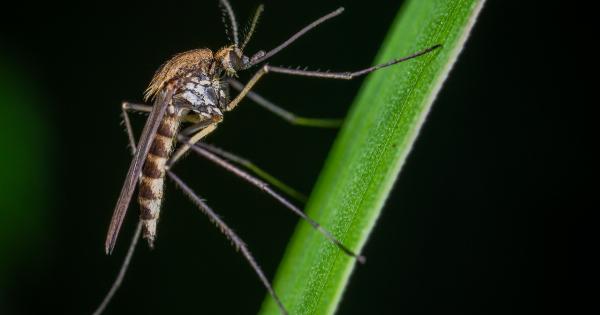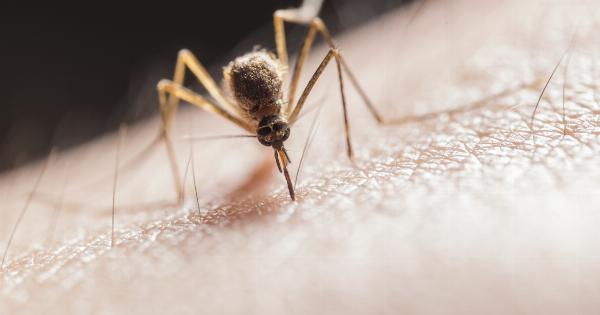Scientists have taken a big step toward eradicating mosquito-borne diseases such as dengue, chikungunya, and Zika by developing a genetically engineered version of the insect that is resistant to the virus that causes these illnesses.
This breakthrough has the potential to save countless lives each year.
The threat of mosquito-borne diseases
Mosquitoes are one of the deadliest animals on the planet. They are responsible for the spread of numerous diseases, including malaria, yellow fever, and dengue fever, which kills around 20,000 people each year.
Dengue fever is a particularly difficult disease to tackle. It is estimated that around 390 million people are infected with dengue each year, and outbreaks of the disease are becoming more frequent in many parts of the world.
There is currently no cure for dengue, and the most effective way to prevent it is to control the mosquito population that spreads the virus.
Introducing genetically modified mosquitoes
Scientists have been working for many years to find new ways to combat mosquito-borne diseases. One of the most promising approaches has been the development of genetically modified mosquitoes that are resistant to these diseases.
Genetically modified mosquitoes are created by manipulating the DNA of the insects to alter their genetic makeup.
This can be done in many ways, but one common method is to introduce new genes into the mosquito that make it resistant to the virus that causes dengue, chikungunya, or Zika.
How do genetically modified mosquitoes work?
The idea behind genetically modified mosquitoes is relatively simple. If mosquitoes are unable to carry or transmit the viruses that cause these diseases, then it becomes much less likely that people will become infected.
To create genetically modified mosquitoes, scientists use a technique called gene editing to alter the DNA sequence of the insect.
This involves making very precise cuts to the mosquito’s DNA and then introducing new genetic material to replace the sequence that has been removed.
The new genetic material is designed to produce proteins that prevent the virus from replicating inside the mosquito’s body. This means that when the mosquito bites a person, the virus is not transmitted, and the person remains healthy.
What are the benefits of genetically modified mosquitoes?
Genetically modified mosquitoes have several benefits compared to traditional methods of controlling mosquito-borne diseases:.
- They are an environmentally friendly way to control the mosquito population, as no pesticides or other chemicals are required.
- They are a more targeted approach to controlling mosquito populations, as only the insects that are genetically modified are affected.
- They have the potential to significantly reduce the incidence of mosquito-borne diseases, saving thousands of lives each year.
Is it safe to release genetically modified mosquitoes into the wild?
One of the biggest concerns surrounding genetically modified mosquitoes is their safety. There are worries that altering the DNA of an insect could have unintended consequences, such as creating new and more dangerous viruses or disrupting ecosystems.
However, studies have shown that genetically modified mosquitoes are safe for release into the environment.
Scientists have conducted extensive trials to test the safety and efficacy of these mosquitoes, and they have been shown to be just as effective at controlling mosquito populations as traditional methods.
Additionally, genetically modified mosquitoes are designed to have a limited lifespan. This means that they do not survive long enough to breed with other mosquitoes in the wild, which helps to prevent the spread of the modified DNA.
What does the future hold for genetically modified mosquitoes?
The development of genetically modified mosquitoes is a major breakthrough in the fight against mosquito-borne diseases. However, there is still much work to be done before these insects can be used on a large scale.
Scientists are continuing to refine the technology used to create genetically modified mosquitoes, with the aim of making it more efficient and cost-effective.
They are also working to develop new ways to introduce these insects into the environment, such as using drones to release them in hard-to-reach areas.
Despite the challenges that remain, the potential benefits of genetically modified mosquitoes are enormous.
By eradicating mosquito-borne diseases, we could save countless lives and improve the health and wellbeing of millions of people around the world.
Conclusion
The development of genetically modified mosquitoes represents a major breakthrough in the fight against mosquito-borne diseases.
By creating insects that are resistant to the viruses that cause these illnesses, we have the potential to save thousands of lives each year and improve the health and wellbeing of millions of people around the world.
While there is still much work to be done to refine this technology and ensure its safety, the future looks bright for genetically modified mosquitoes.
With ongoing research and development, we could soon live in a world where mosquito-borne diseases are a thing of the past.





























